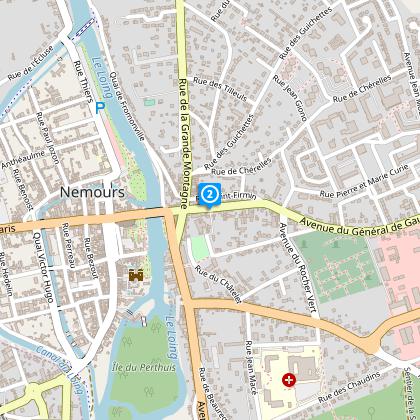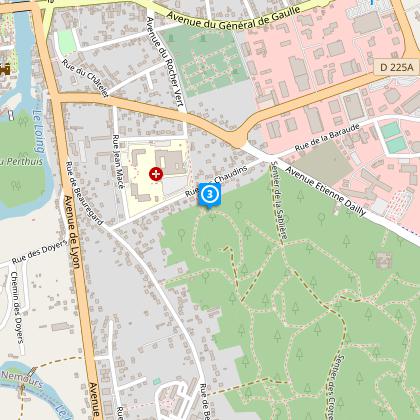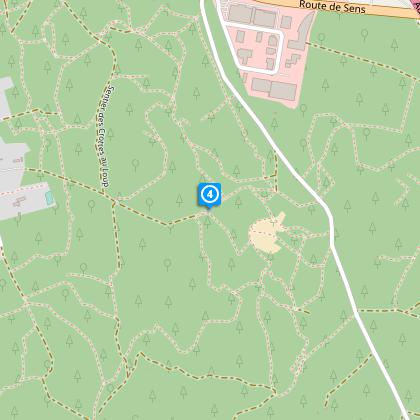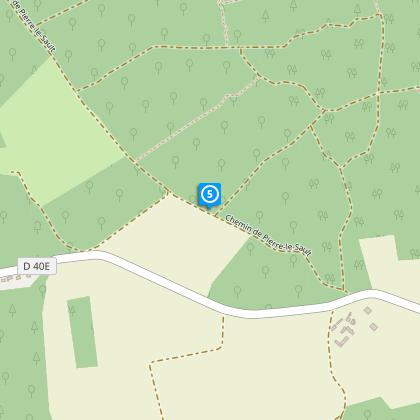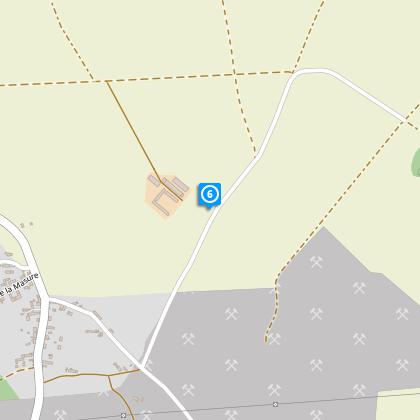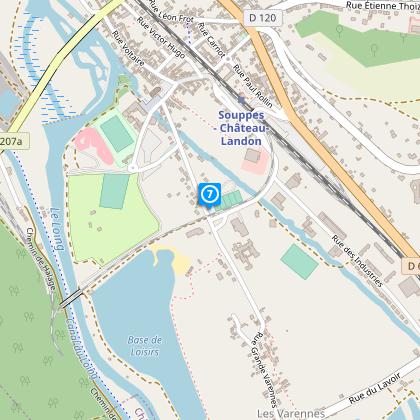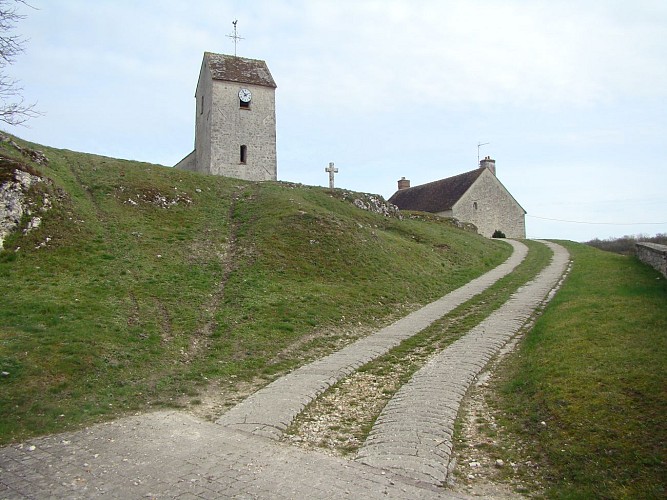Allarme
Allarmi
Tipo di pratica
A piedi
Medio
5h
Descrizione
Mappa
Tappe
Punti di interesse
Sintesi di Cirkwi
Valutazioni e recensioni
Vedi nei dintorni
Rocce e Boschi del Sud Seine et Marne

Credito : Pixabay
Il breve di Cirkwi
Esplora Nemours: Un viaggio tra bellezze naturali e storia
Imbarcarsi in questo percorso significa immergersi in un regno dove natura e storia si intrecciano in modo splendido. Guidati dall'Ufficio del Turismo del Pays de Nemours, questo percorso ti invita a scoprire i tempi passati di Nemours, una volta cuore regnante del Gâtinais, mentre ti addentri accanto al tranquillo fiume Loing e ammiri il suo castello. Avventurandoti ancora più lontano, sarai accolto da foreste punteggiate da paesaggi rocciosi surreali in mezzo a brughiere sabbiose. Questo viaggio culmina a Souppes-sur-Loing, rinomata per le sue squisite pietre calcaree. È una storia di meraviglie naturali e fascino storico che attende i tuoi passi.
Breve panoramica tecnica per gli escursionisti
Questo percorso si estende per 20 chilometri, partendo dalla stazione ferroviaria di Nemours-Saint-Pierre e attraversando terreni variati. Questo percorso vanta un dislivello che va dai 320 ai 311 metri, con il punto più alto a 131 metri e il più basso a 59 metri. Una tale diversità di altitudine offre un'esperienza di trekking stimolante. I partecipanti possono anticipare una camminata impegnativa che richiede una buona resistenza fisica. Ideale per gli appassionati che cercano soddisfazione tecnica, combina il piacere di un percorso panoramico con le sfide di una sfida fisica importante.
Consigli stagionali per gli esploratori di Nemours
Indipendentemente dalla stagione, la preparazione è fondamentale per questo viaggio. In estate, porta abbondante acqua e protezione solare a causa delle sezioni esposte al sole. L'autunno richiede abbigliamento impermeabile, poiché in questa stagione può capitare qualche pioggia improvvisa durante la tua avventura. Gli esploratori invernali dovrebbero equipaggiarsi con abbigliamento termico e fare attenzione ai sentieri scivolosi. La primavera, vivace e mite, è perfetta, ma i sentieri possono essere fangosi, quindi indossa calzature appropriate. Informa sempre qualcuno del tuo itinerario prima di partire e rimani sui sentieri segnalati per garantire la tua sicurezza.
Comprendere Nemours: Rilevanza storica svelata
Nemours, situata nel dipartimento di Seine-et-Marne all'interno della più ampia regione dell'Île-de-France, vanta un profondo tessuto storico. Questa antica capitale del Gâtinais testimonia l'eredità medievale della Francia, sorvegliata dal suo imponente castello che veglia sul Loing sin dalla sua origine. La regione è famosa per la sua incantevole foresta e la sua geomorfologia unica, che storicamente ha fornito rifugio e risorse ai suoi abitanti. L'estrazione della pietra calcarea di Souppes-sur-Loing sottolinea ulteriormente il ruolo fondamentale dell'area nell'evoluzione architettonica del territorio circostante.
I migliori periodi per visitare in base ai modelli meteorologici
Guida climatica di Seine-et-Marne per i viaggiatori
La regione di Seine-et-Marne ha un clima temperato, rendendo Nemours accessibile e piacevole durante tutto l'anno. Tuttavia, il momento ottimale per visitare è tra maggio e settembre, quando il tempo è tipicamente piacevole, con temperature medie adatte alle attività all'aperto. Luglio e agosto sono i mesi più caldi, ideali per godersi i panorami pittoreschi. Al contrario, coloro che desiderano evitare la folla estiva potrebbero trovare la primavera (da fine marzo a maggio) o l'inizio dell'autunno (settembre e ottobre) perfetti, con temperature miti e meno turisti.
Imbarcarsi in questo percorso significa immergersi in un regno dove natura e storia si intrecciano in modo splendido. Guidati dall'Ufficio del Turismo del Pays de Nemours, questo percorso ti invita a scoprire i tempi passati di Nemours, una volta cuore regnante del Gâtinais, mentre ti addentri accanto al tranquillo fiume Loing e ammiri il suo castello. Avventurandoti ancora più lontano, sarai accolto da foreste punteggiate da paesaggi rocciosi surreali in mezzo a brughiere sabbiose. Questo viaggio culmina a Souppes-sur-Loing, rinomata per le sue squisite pietre calcaree. È una storia di meraviglie naturali e fascino storico che attende i tuoi passi.
Breve panoramica tecnica per gli escursionisti
Questo percorso si estende per 20 chilometri, partendo dalla stazione ferroviaria di Nemours-Saint-Pierre e attraversando terreni variati. Questo percorso vanta un dislivello che va dai 320 ai 311 metri, con il punto più alto a 131 metri e il più basso a 59 metri. Una tale diversità di altitudine offre un'esperienza di trekking stimolante. I partecipanti possono anticipare una camminata impegnativa che richiede una buona resistenza fisica. Ideale per gli appassionati che cercano soddisfazione tecnica, combina il piacere di un percorso panoramico con le sfide di una sfida fisica importante.
Consigli stagionali per gli esploratori di Nemours
Indipendentemente dalla stagione, la preparazione è fondamentale per questo viaggio. In estate, porta abbondante acqua e protezione solare a causa delle sezioni esposte al sole. L'autunno richiede abbigliamento impermeabile, poiché in questa stagione può capitare qualche pioggia improvvisa durante la tua avventura. Gli esploratori invernali dovrebbero equipaggiarsi con abbigliamento termico e fare attenzione ai sentieri scivolosi. La primavera, vivace e mite, è perfetta, ma i sentieri possono essere fangosi, quindi indossa calzature appropriate. Informa sempre qualcuno del tuo itinerario prima di partire e rimani sui sentieri segnalati per garantire la tua sicurezza.
Comprendere Nemours: Rilevanza storica svelata
Nemours, situata nel dipartimento di Seine-et-Marne all'interno della più ampia regione dell'Île-de-France, vanta un profondo tessuto storico. Questa antica capitale del Gâtinais testimonia l'eredità medievale della Francia, sorvegliata dal suo imponente castello che veglia sul Loing sin dalla sua origine. La regione è famosa per la sua incantevole foresta e la sua geomorfologia unica, che storicamente ha fornito rifugio e risorse ai suoi abitanti. L'estrazione della pietra calcarea di Souppes-sur-Loing sottolinea ulteriormente il ruolo fondamentale dell'area nell'evoluzione architettonica del territorio circostante.
I migliori periodi per visitare in base ai modelli meteorologici
Guida climatica di Seine-et-Marne per i viaggiatori
La regione di Seine-et-Marne ha un clima temperato, rendendo Nemours accessibile e piacevole durante tutto l'anno. Tuttavia, il momento ottimale per visitare è tra maggio e settembre, quando il tempo è tipicamente piacevole, con temperature medie adatte alle attività all'aperto. Luglio e agosto sono i mesi più caldi, ideali per godersi i panorami pittoreschi. Al contrario, coloro che desiderano evitare la folla estiva potrebbero trovare la primavera (da fine marzo a maggio) o l'inizio dell'autunno (settembre e ottobre) perfetti, con temperature miti e meno turisti.
Generato automaticamente.
Informazioni tecniche
A piedi
Difficoltà
Medio
Durata
5h
Dist.
20 km
Tipo di pratica
A piedi
Medio
5h
Mostra di più
Profilo altimetrico
Punto di partenza
Gare de Nemours Saint-Pierre
,
77140Nemours
Lat : 48.267875Lng : 2.685662
Tappe
Punti di interesse
Autore dei dati

proposto da
Office de Tourisme du Pays de Nemours
28 rue Gautier 1er 77140 Nemours France
Valutazioni e recensioni
Da vedere nei dintorni

